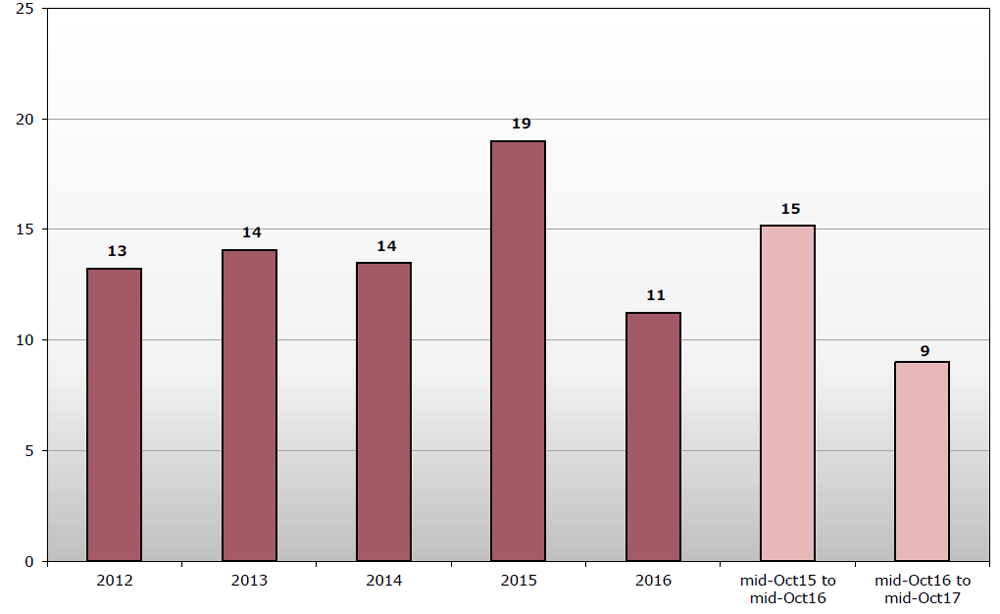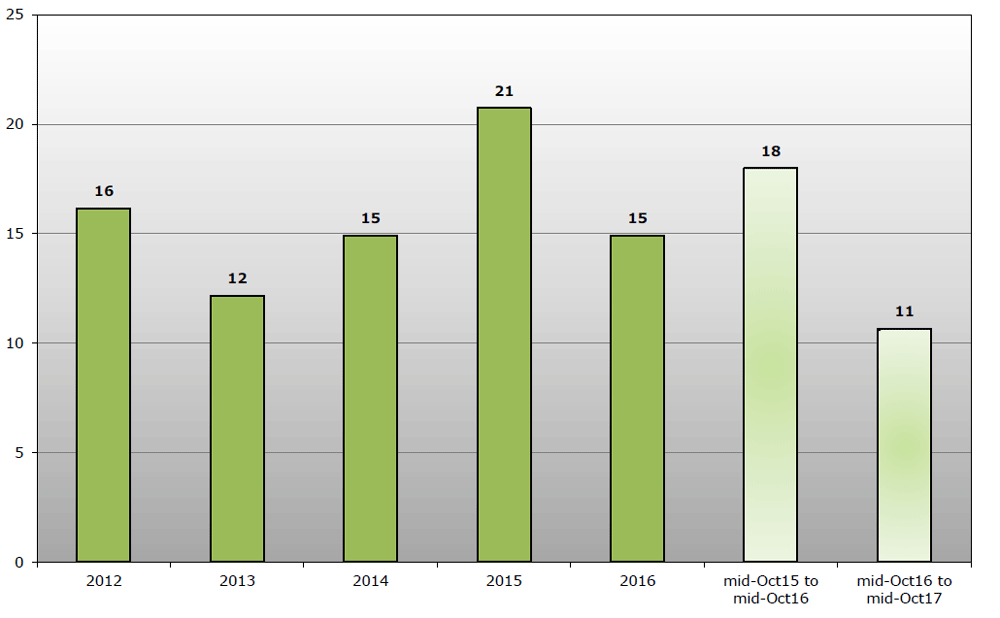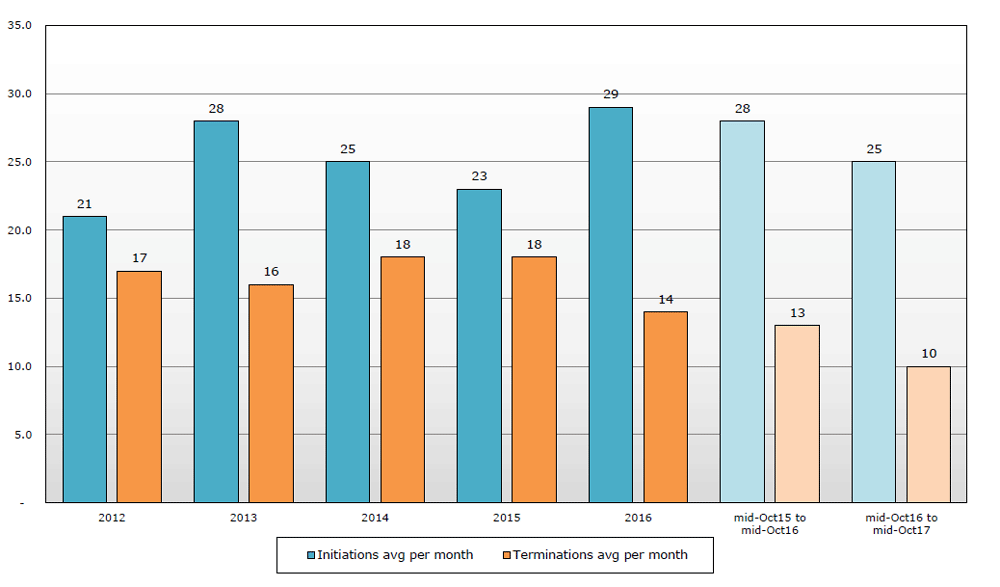More
The report points out the need for WTO members to show leadership in reiterating their commitment to open and mutually beneficial trade as a key driver of economic growth and a major engine for prosperity and to continue to work together to achieve a successful WTO Ministerial Conference in Buenos Aires later this month.
The report, which was discussed at the 4 December meeting of the WTO’s Trade Policy Review Body (TPRB), shows that 108 new trade-restrictive measures were put in place, including new or increased tariffs, customs regulations, quantitative restrictions and local content measures. This equates to an average of 9 measures per month compared to 15 in the previous period (mid-October 2015 to mid-October 2016).
During the same period, members implemented 128 measures aimed at facilitating trade. At almost 11 trade-facilitating measures per month, this remains significantly lower than the monthly average recorded in the previous annual overview report. It is noteworthy that the estimated trade coverage of import-facilitating measures (US$ 169 billion) is more than twice that of import-restrictive measures (US$ 79 billion).
There was also a slight deceleration both in initiations of trade remedy investigations and in terminations of trade remedy measures compared to the previous annual overview and to the whole of 2016. The trade coverage of trade remedy initiations and terminations recorded in the report is estimated at US$ 76 billion and US$ 12 billion, respectively.
"The economic context for this year's report is interesting, to say the least. International trade flows have rebounded strongly during the last 12 months after a sharp slowdown in 2016. In September we upgraded our forecast for trade growth in 2017. This was due to a sharp acceleration in global trade growth in the first half of the year. The original forecast was 2.4 per cent, and we are now forecasting growth of 3.6 per cent. This improved outlook is very welcome, but substantial risks that threaten the world economy remain in place and could easily undermine any trade recovery. Looking ahead, we need to keep up the hard work to help facilitate trade. And of course, this includes avoiding measures which can hamper and restrict trade flows," WTO Director-General Roberto Azevêdo said in his address to the TPRB.
"Further progress will require continued commitment. I urge members to redouble efforts to refrain from implementing new trade-restrictive measures, and to reverse existing measures," he added. His full speech is available here.
Key findings
- WTO members applied 108 new trade-restrictive measures during the review period from mid-October 2016 to mid-October 2017, including new or increased tariffs, customs procedures, quantitative restrictions and local content measures. This equates to an average of nine measures per month compared to fifteen in the previous period.
- WTO members also implemented 128 measures aimed at facilitating trade, including eliminated or reduced tariffs and simplified customs procedures. At almost 11 trade-facilitating measures per month, this remains significantly lower than the monthly average of 18 recorded in the previous annual overview report. WTO members continue to implement more trade-facilitating than trade-restrictive measures, a trend observed over the past four years.
- It is noteworthy that the estimated trade coverage of import-facilitating measures (US$ 169 billion) is more than two times larger than that of import-restricting measures (US$ 79 billion). In addition, the import-facilitating measures implemented during the review period in the context of the ITA Expansion Agreement are estimated at around US$ 385 billion or 2.4% of the value of world merchandise imports.
- On trade remedy measures, the review period saw a slight deceleration both in initiations of investigations and in terminations of measures, compared to the previous annual overview and to the whole of 2016. Anti-dumping measures continue to make up the bulk of all trade remedy initiations.
- Transparency and predictability in trade policy remains vital for all actors in the global economy. Collectively, WTO members must show leadership in reiterating their commitment to open and mutually beneficial trade as a key driver of economic growth and a major engine for prosperity. In preparing for the 11th WTO Ministerial Conference, members must continue to work together to achieve a successful meeting in Buenos Aires in December.
Trade-restrictive measures, excluding trade remedies
(average per month)
Note: Values are rounded.
Source: WTO Secretariat.
Trade-facilitating measures, excluding trade remedies
(average per month)
Note: Values are rounded.
Source: WTO Secretariat.
Overview of measures taken by WTO Members and Observers, mid-October 2016 to mid‑October 2017
(by number)
Source: WTO Secretariat.
Trade coverage of import measures, mid-October 2016 to mid-October 2017
Source: WTO Secretariat.
Trade remedy initiations and terminations
Source: WTO Secretariat.
Share
Share
Problems viewing this page? If so, please contact [email protected] giving details of the operating system and web browser you are using.




